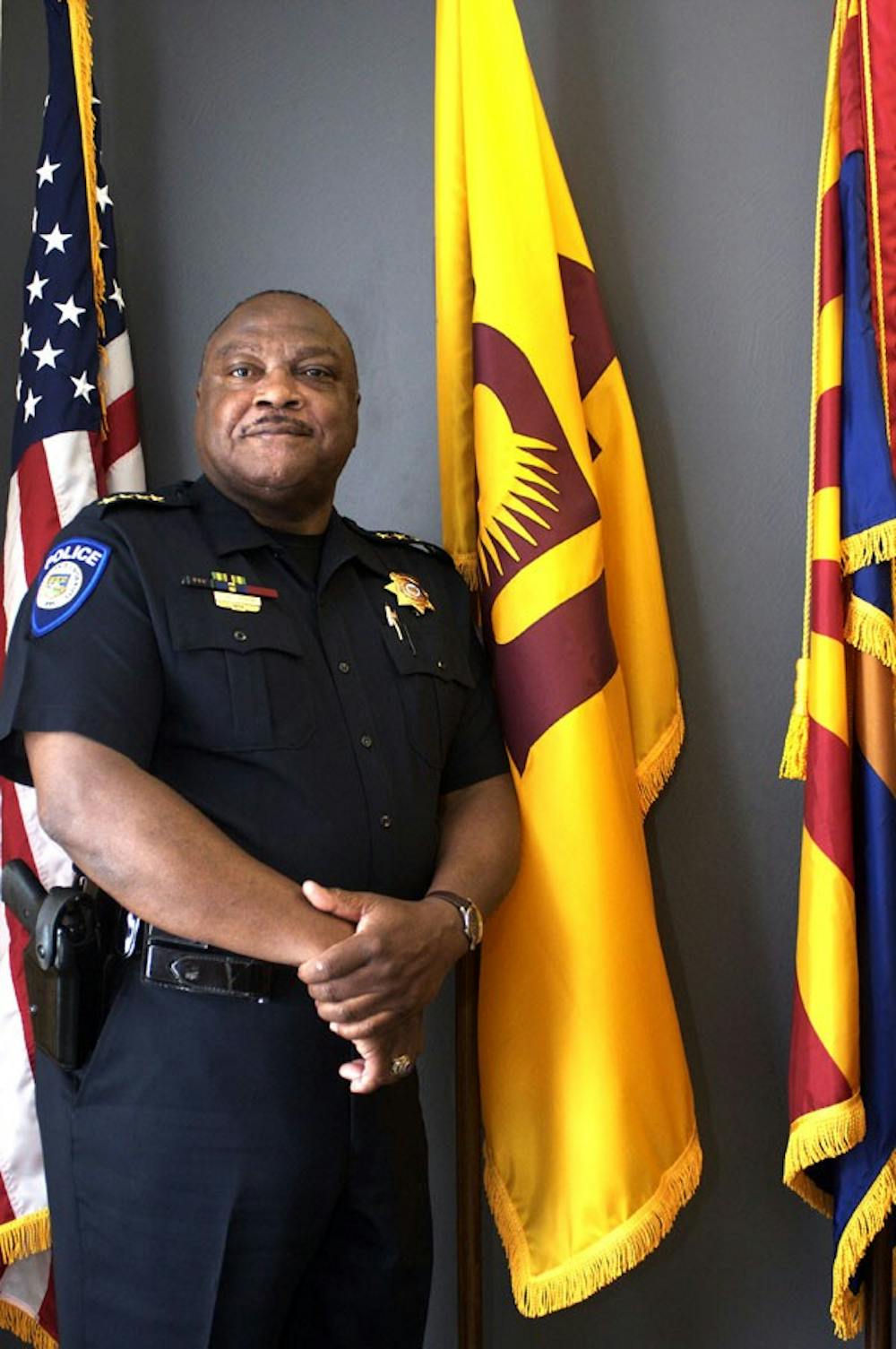It has been nearly a decade since ASU Chief of Police John L. Pickens took the reins of the ASU Police Department, and it’s been a busy 10-year stretch.
Pickens has added Tasers to the police arsenal, changed methods of transportation for officers around campus and even added the department’s first K-9 unit — but that’s barely scratching the surface of his resume.
“He’s brought in the spirit and philosophy of community policing,” said Jay Spradling, assistant chief of ASU Police. “He has truly pushed partnerships, not only with the ASU community but with the communities at large around our campuses.”
When Pickens was hired as chief of police in 2000, he was only in charge of the Tempe campus. He had a vision, though, to consolidate all of the police departments into one, under his authority.
Pickens said dispatch services at other campuses “wasn’t a true 9-1-1,” and with encouragement from President Michael Crow, Pickens began the consolidation process in 2003.
The process ended up as a complete overhaul of organization within the department.
During the process a lot of promotion opportunities were presented to line officers, the Polytechnic campus was to be headed by a police commander and an assistant chief of police was added to the staff structure, Pickens said.
The new organization of ASU Police also created a new look for the department.
Police uniforms were changed from a tan color to dark blue, Pickens said, and all of the patches, badges and car decals were updated with new designs.
In 2006, Pickens had to prepare for the opening of the Downtown campus, he said, and saw that as a chance to upgrade the department technologically.
Pickens said wireless laptops and cameras were installed into patrol cars and the handheld radios were upgraded.
Police weaponry has also seen a change under Pickens’ direction.
Police were outfitted with non-lethal Tasers in 2005, and patrol rifles were placed in vehicles in the wake of the Virginia Tech shootings, he said.
Pickens has also expanded the police aide program, which he said increased from 10 or 12 to “41-and-a-half,” including the department’s first K-9 unit, a yellow Labrador named Disney that was sworn in last year.
Pickens recently had to deal with issues affecting law enforcement at ASU, including the unpaid furloughs in 2009 and a proposed bill for University faculty to carry firearms on campus.
Sworn police staff was exempt from the furloughs, Pickens said, and he still found a way to help the University make ends meet.
“We’ve got increased enrollment,” Pickens said. “It would be very difficult to provide the level of services the University community has been accustomed to without compromising public safety.”
So Pickens offered a compromise. He said his command staff, which includes everyone ranking from commander up to himself, would take the furlough days. As a result, Pickens voluntarily took 15 unpaid days from his post.
When the Arizona Legislature proposed a bill in March that would allow University faculty to carry concealed firearms on campus, Pickens testified against the bill before the Legislature.
“I think the bill had good intentions on taking a look into that, but I think it would have undue consequences,” Pickens said. “The mere fact is that I looked at the training that a concealed weapons permit holder would go through, I looked at what our responsibility is, and responding to those types of shootings. Our role should be left to us.”
ASU Police Cmdr. Jim Hardina said one benefit of having Pickens at ASU is that he not only understands university policing, but also understands the culture on campus.
“He started out his career as a city police officer, but also has a lot of experience in the university setting,” Hardina said. “Policing between a university and a city has a lot of similarities, but they’re definitely unique.”
For the future of the police department, sustainability is on Pickens’ mind.
“We’re working very hard to reduce the carbon footprint by an increased use of alternative modes of transportation,” Pickens said. “We may possibly experiment with hybrid vehicles, so we’re looking at those things.”
Spradling said he has noticed the innovation Pickens has brought in increasing the department’s sustainability, including the opportunity for officers to patrol the campuses in a more sustainable manner.
“He’s been very supportive in leading the charge in being sustainable,” he said.
Reach the reporter at mhendley@asu.edu





